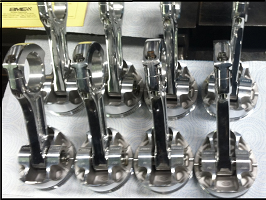



How you apply nitrous can greatly affect the maximum amount of torque that your clutch and drivetrain will see, let's start by analyzing this graph of an actual run down the strip. Below this graph's red engine rpm trace, you will see the averaged/calculated torque that got applied to the clutch disc over the course of this NA pass...
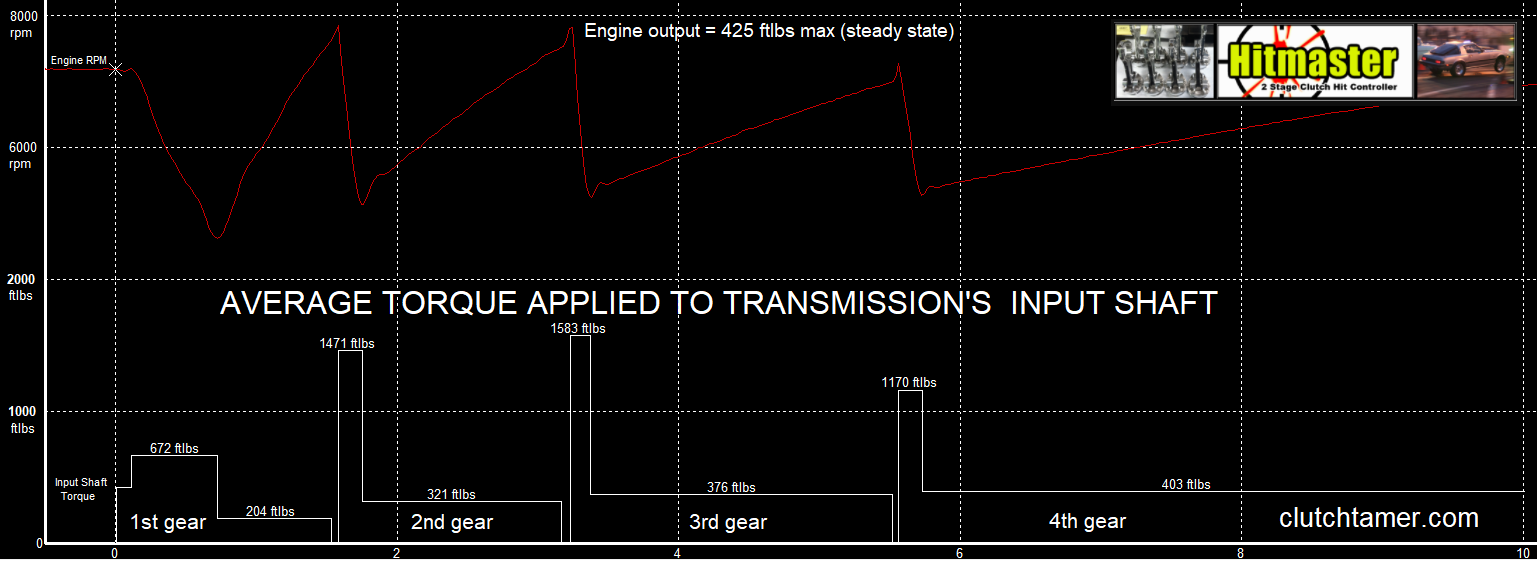
If you were to add even 200hp of nitrous on top of any of those NA torque spikes, that added nitrous torque makes it much easier to blow thru the clutch. After you've blown thru a clutch, that clutch is likely to keep slipping until the point where vehicle speed eventually catches up with engine rpm. Chances are the clutch won't last long enough for that to happen unless you back off the throttle. If it doesn't blow thru the clutch, the increased spike can be enough to either knock radials loose or put you on the trailer with broken parts.
Before adding nitrous to the above graph, first order of business should be to fix those nasty NA spikes after the gear changes. Those spikes are the result of installing too much clutch clamp pressure, which also in-turn increases wear/tear on the rest of the drivetrain. There are a couple of ways to deal with excessive spikes after the shifts. Best way is to simply reduce clutch clamp pressure, either by shimming your existing pressure plate to reduce its static clamp pressure, or by installing a clutch with less torque capacity. If you want to keep the clutch you already have and don't want to go to the trouble of shimming it, a device like my ClutchTamer can be used to soften shifts made using the clutch pedal.
Here's the calculated effects of reducing clamp pressure just enough to roughly double clutch slip time after the shifts. The differences between the dotted red and solid yellow lines on the engine rpm trace represent areas of added power production due to raising the engine's average rpm. Because the car was also gaining speed during this time, the engine does not get pulled down as far by the clutch, which adds to the benefit...
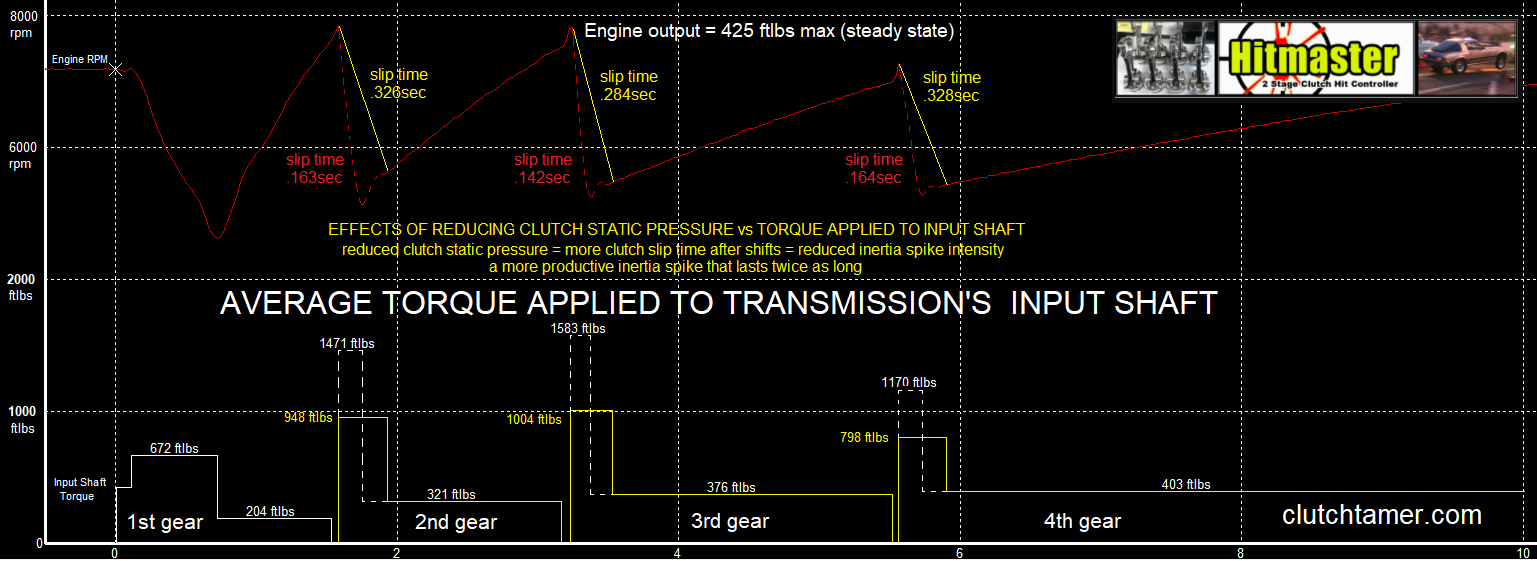
Now instead of knocking the radials loose with intense spikes after the shifts, they instead get a softer hit that they can handle that lasts roughly twice as long. Here's a comparison of what those spikes look like at the driveshaft, after being multiplied by the transmission ratios...
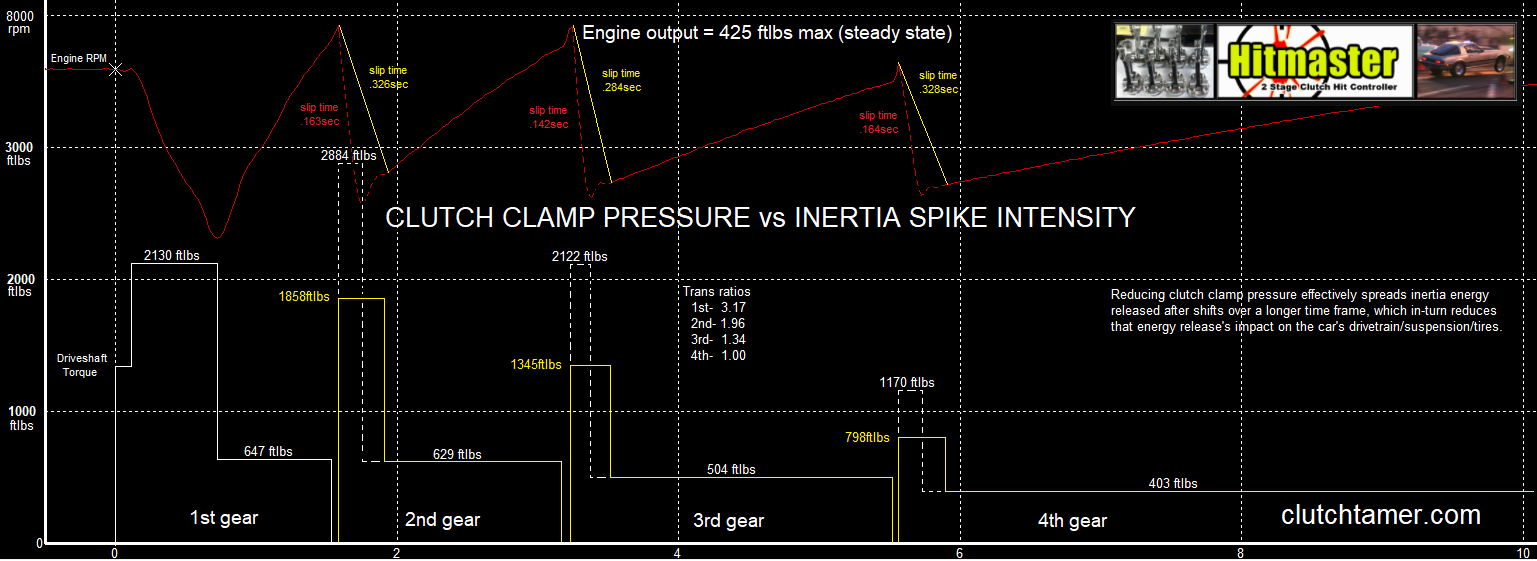
The best approach to adding nitrous to the above graph is to delay the nitrous until after the NA torque spikes. If you do this the clutch will be worked no harder than during an NA pass, as the nitrous doesn't come on until after the engine speed has been pulled down enough to match vehicle speed. A big advantage to doing this is that you can fit a much larger nitrous shot in between the torque spikes without blowing thru the clutch. But why stop at a 200 shot? Here's an example showing a calculated 400hp shot being applied between those NA spikes. Note that the total torque applied to the driveshaft, including the 400hp nitrous shots, does not exceed the torque applied during the initial NA launch...
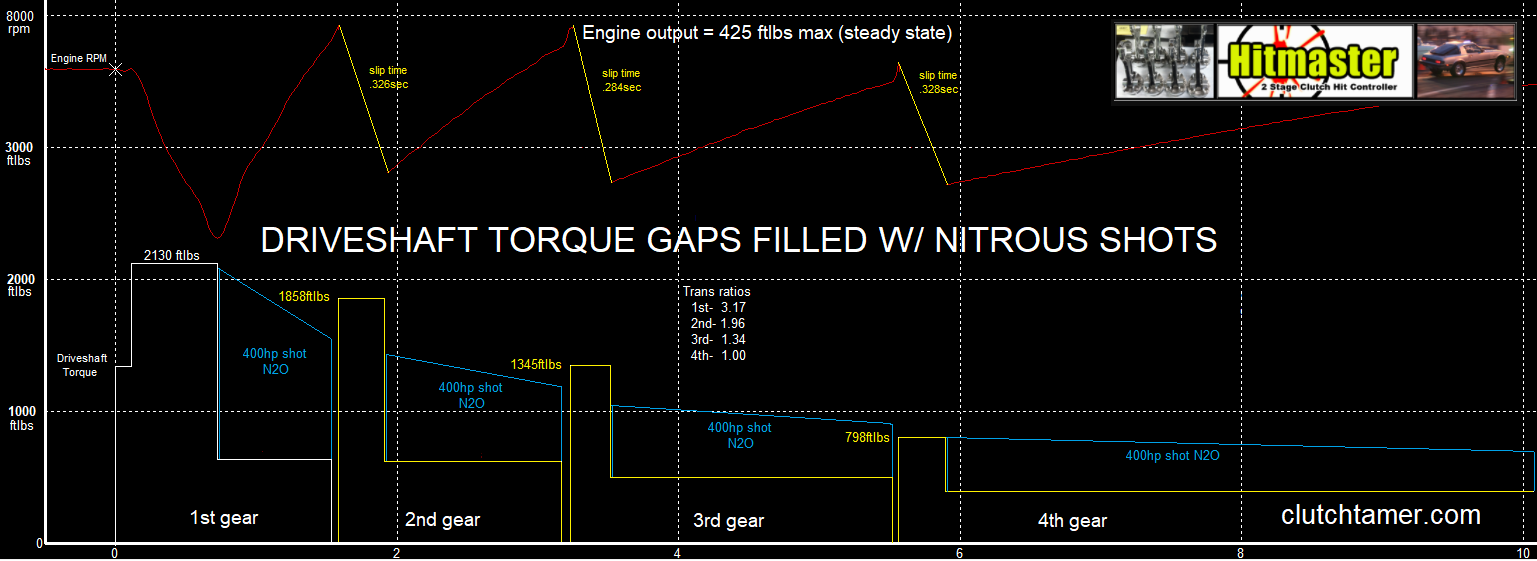
This is a far smoother radial friendly way to get down the track with nitrous, also far easier on the clutch. Same clutch that works for NA passes now works for nitrous passes. If you race no-prep, its important to note that the result can be an overall power profile that's smoother than you see from most automatics, without impacting the drivetrain any harder with 400hp nitrous shots than you would otherwise see without the nitrous.
The torque created by a constant shot of nitrous is roughly inverse of engine rpm. Doubling engine rpm cuts the nitrous torque in half. A 200hp shot that adds 300ftlbs @ 3500rpm will be down to about 150ftlbs by 7000rpm. Here is a chart that shows the amount of torque you might expect from different size shots as engine rpm increases...
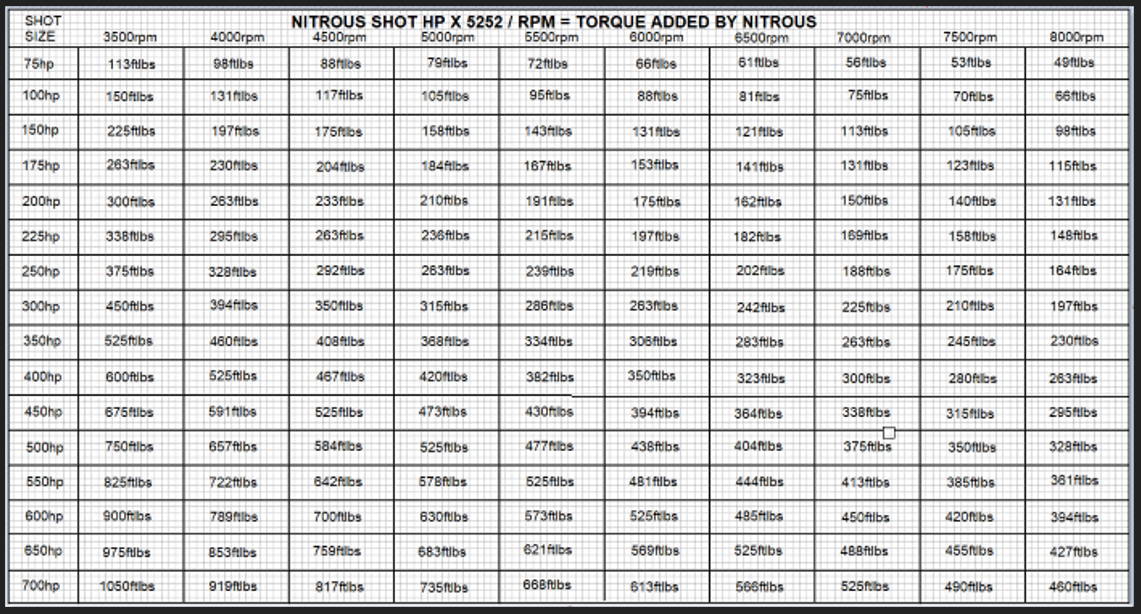
But along with the above, you also have to consider that the added nitrous flow is likely displacing some of the flow that would otherwise come thru the throttle body. Adding flow after the throttle body reduces flow thru the throttle body as the engine only draws what it can when nothing is forcing the induction. I remember an example where a split dominator nitrous car had some carb linkage wasn't hooked up and the car still performed. Here's an old snip I saved of a post as an example...


CHANGING THE GAME ON LAUNCHING YOUR STICK SHIFT CAR!!!